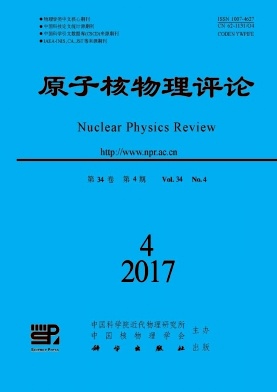|
[1]
|
TSUJⅡ H, KAMADA T, SHIRAI T, et al. Carbon-Ion Radiotherapy:Principles, Practices, and Treatment Planning[M]. Tokyo:Springer, 2014:13. |
|
[2]
|
DELANEY T F, KOOY H M, et al. Proton and Charged Particle Radiotherapy[M]. Philadelphia:Wilkins, 2008:110. |
|
[3]
|
MA L,ZHOU G X, FENG L C, et al. High LET (heavy ion and fast neutron) Malignant Tumors Therapeutic Radiology[M]. Beijing:Military Medicine Science Press, 2007:52. (in Chinese) (马林, 周桂霞, 冯林春, 等. 恶性肿瘤高LET(重离子, 快中子)放射治疗学[M]. 北京:军事医学科学出版社, 2007:52.) |
|
[4]
|
CARABE-FERNANDEZ A, DALE R G, HOPEWELL J W, et al. Phys Med Biol, 2010, 55(19):5685. |
|
[5]
|
DENEKAMP J, WAITES T, FOWLER J F, et al. Int J Radiat Biol, 1997, 71(6):681. |
|
[6]
|
FRIEDRICH T, SCHOLZ U, DURANTE M, et al. Phys Med, 2014, 30(5):588. |
|
[7]
|
FRESE M C, YU V K, STEWART R D, et al. Int J Radiat Oncol Biol Phys, 2012, 83(1):442. |
|
[8]
|
ANDREO P, BURNS D T, HOHLFELD K, et al. IAEA TRS-398, 2001:124. |
|
[9]
|
FURUSAWA Y, FUKUTSU K, AOKI M, et al. Radiation Research, 2000, 154(5):485. |
|
[10]
|
K WEYRATHER SRMSW, et al. Int J Radiat Biol, 2009, 75(11):1357. |
|
[11]
|
WANG J, LI R, GUO C, et al. Journal of Radiation Research, 2008, 49(4):391. |
|
[12]
|
SUZUKI M, KASE Y, H, KANAI T, et al. International Journal of Radiation Oncology Biology Physics, 2000, 48(1):241. |
|
[13]
|
SUZUKI M, KASE Y, H, KANAI T, et al. International Journal of Radiation Oncology Biology Physics, 2000, 48(1):251. |
|
[14]
|
TSURUOKA C, SUZUKI M, KANAI T, et al. Radiation Research, 2005, 163(5):494. |
|
[15]
|
AMORNWICHET N, OIKE T, SHIBATA A, et al. Plos One, 2014, 9(12). |
|
[16]
|
MATSUMOTO Y, IWAKAWA M, FURUSAWA Y, et al. Int J Radiat Biol, 2008, 84(4):299. |
|
[17]
|
MATSUZAKI H, MIYAMOTO T, MIYAZAWA Y, et al. Breast Cancer, 1998, 5(3):261. |
|
[18]
|
OONISHI K, CUI X, HIRAKAWA H, et al. Radiother Oncol, 2012, 105(2):258. |
|
[19]
|
TAKAHASHI A, MA H, NAKAGAWA A, et al. International Journal of Medical Physics, Clinical Engineering and Radiation Oncology, 2014, 03(03):133. |
|
[20]
|
HIRAYAMA R, UZAWA A, TAKASE N, et al. Mutat Res, 2013, 756(1-2):146. |
|
[21]
|
BELLI M, BETTEGA D, CALZOLARI P, et al. Journal of Radiation Research, 2008, 49(6):597. |
|
[22]
|
OGATA T, TESHIMA T, KAGAWA K, et al. Cancer Research, 2005, 65(1):113. |
|
[23]
|
KITAJIMA S, NAKAMURA H, ADACHI M, et al. Journal of Radiation Research, 1997, 71(6):681. |
|
[24]
|
DENEKAMP J, WAITES T, FOWLER JF, et al. Int J Radiat Biol, 2010, 5:251. |
|
[25]
|
LIU X, LIU Y, LI Q, et al. Nuclear Physics Review, 2015, 32(4):473. (in Chinese) (刘玺, 刘岩, 李强. 原子核物理评论. 2015, 32(4):473.) |
|
[26]
|
JIN X, LI F, ZHENG X, et al. Scientific Reports, 2015, 5:13815. |
|
[27]
|
LIU Y, LIU X, JIN X, et al. Journal of Nanoscience & Nanotechnology, 2016, 16(3):2365. |
|
[28]
|
ZHENG Y T, XIA Y F, QIAN J Y, et al. Chinese Journal of medical Physics, 1999, 16(3):194. (in Chinese) (郑云婷, 夏云飞, 钱剑扬. 中国医学物理学杂志. 1999, 16(3):194.) |






 甘公网安备 62010202000723号
甘公网安备 62010202000723号 DownLoad:
DownLoad: